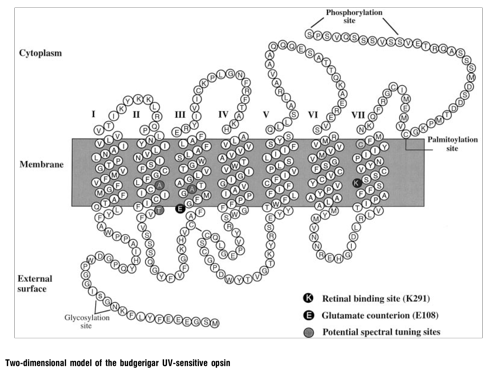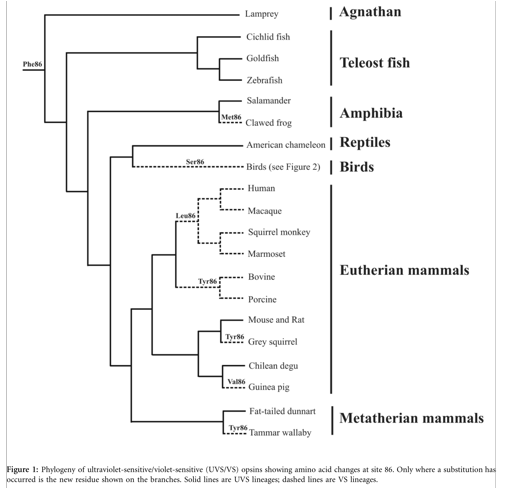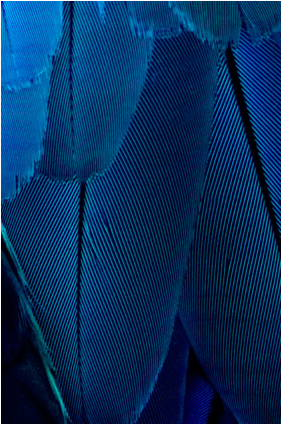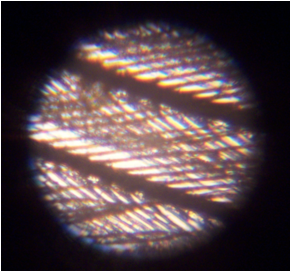UV Plumage and Female Mate Choice
Biology 342 Fall 2010 Rachel Baden
Mechanisms
Of UV-Receptive Pigments in the Eye
Birds have six different types of light-receptive molecules in their eyes: one type of rod, four types of single cones, and one type of double cone. The four single cones are the pigments involved in color perception, and each detects light in a different range of the spectrum – the red molecule (or long-wave sensitive, LWS) from 505 to 630 nanometers in wavelength, the green (medium-wave sensitive, RH2) from 460-540 nm, the blue (short-wave sensitive, SWS2) from 410-475 nm and the UV pigment (SWS1) from 355 to 440 nm (Hart and Hunt, 2007).

In budgerigars, the UV-receptive pigment has a maximum wavelength of about 371 nm.
In vertebrates, the ancestral SWS molecule had a peak wavelength in the UV spectrum, but a mutation occurred sometime in the DNA of the vertebrate lineage, causing the pigment to shift its peak wavelength into the visible range. For birds to perceive UV light, a second mutation had to have occurred to transfer the peak wavelength back into the ultraviolet range (Hart and Hunt, 2007). A 2000 experiment found that a single amino acid change in the code for the violet-receptive pigment found in chickens and pigeons would transform the pigment into a UV-sensitive one; such a simple mutation might have only occurred once in the evolution of the avian UV pigment from the violet one (Yokoyama et. al. 2000).

This diagram shows the potential single mutation (at amino acid 86 in the pigment gene)
that transformed the violet pigment into a UV-receptive molecule,
as well as various other mutations at the same site in other vertebrate lineages.
In general, pigments used for vision work by absorbing photons of light that enter the eye and pass through to the retina at the back. The photons “excite” the pigment molecules to a higher energy level, which causes a structural change in the molecule that begins a cascade of molecule shape changes, which lead to an electrical signal being sent to the brain (Terakita 2005).
Of UV-Reflecting Feather Structure
Ultraviolet is considered a “structural color;” that is, it is produced by the structure of feathers, not by chemical pigments like melanins and carotenoids. Such effects result from the way that light reflects off the microstructure of the feather barbs and barbules.

The wing feathers of a blue-and-gold macaw (Ara ararauna)
show the arrangement of the barbs around the central shaft.
An even closer look at a feather shows the barbules, which are hooked to keep the barbs connected to each other properly.

The cross-arrangement of barbules in the microstructure of a budgerigar feather.
Structural colors such as UV are produced by a form of constructive interference, called “coherent scattering,” of light waves reflecting off the barbules: the waves combine and reinforce each other to create waves of a new wavelength (a different color). The spongy medullary layer inside the barbules is the primary cause of the coherent scattering (Prum et. al. 2003). The spongy medullary layer is composed of air pockets separating keratin structures; keratin is a protein also found in various other structures such as bird beaks and human hair (Andersson 1999).